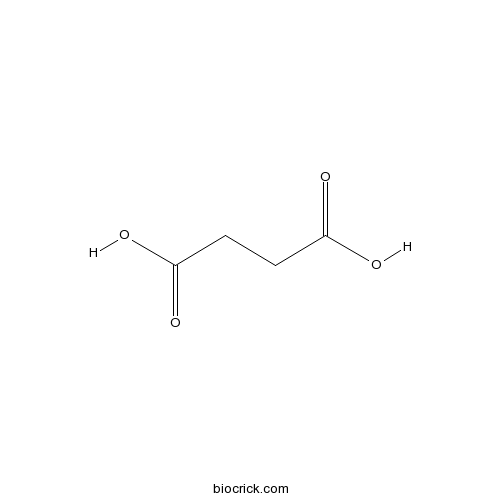Bothriochloa ischaemum
Bothriochloa ischaemum
1. The products in our compound library are selected from thousands of unique natural products; 2. It has the characteristics of diverse structure, diverse sources and wide coverage of activities; 3. Provide information on the activity of products from major journals, patents and research reports around the world, providing theoretical direction and research basis for further research and screening; 4. Free combination according to the type, source, target and disease of natural product; 5. The compound powder is placed in a covered tube and then discharged into a 10 x 10 cryostat; 6. Transport in ice pack or dry ice pack. Please store it at -20 °C as soon as possible after receiving the product, and use it as soon as possible after opening.
Natural products/compounds from Bothriochloa ischaemum
- Cat.No. Product Name CAS Number COA
-
BCN5890
Succinic acid110-15-6
Instructions

[Effects of short-term elevated CO2 concentration and drought stress on the rhizosphere effects of soil carbon, nitrogen and microbes of Bothriochloa ischaemum.][Pubmed: 29692143]
None
Endophytic fungi and soil microbial community characteristics over different years of phytoremediation in a copper tailings dam of Shanxi, China.[Pubmed: 27665448]
We conducted a survey of native grass species infected by endophytic fungi in a copper tailings dam over progressive years of phytoremediation. We investigated how endophytic fungi, soil microbial community structure and soil physiochemical properties and enzymatic activity varied in responses to heavy metal pollution over different stages of phytoremediation. endophyte infection frequency increased with years of phytoremediation. Rates of endophyte infection varied among different natural grass species in each sub-dam. Soil carbon content and soil enzymatic activity gradually increased through the years of phytoremediation. endophyte infection rates of Bothriochloa ischaemum and Festuca rubra were positively related to levels of cadmium (Cd) pollution levels, and fungal endophytes associated with Imperata cylindrical and Elymus dahuricus developed tolerance to lead (Pb). The structure and relative abundance of bacterial communities varied little over years of phytoremediation, but there was a pronounced variation in soil fungi types. Leotiomycetes were the dominant class of resident fungi during the initial phytoremediation period, but Pezizomycetes gradually became dominant as the phytoremediation period progressed. Fungal endophytes in native grasses as well as soil fungi and soil bacteria play different ecological roles during phytoremediation processes.
Eco-Physiological Responses of Dominant Species to Watering in a Natural Grassland Community on the Semi-Arid Loess Plateau of China.[Pubmed: 27242864]
Altered precipitation regimes significantly affect ecosystem structure and function in arid and semi-arid regions. In order to investigate effects of precipitation changes on natural grassland community in the semi-arid Loess Plateau, the current research examined eco-physiological characteristics of two co-dominant species (i.e., Bothriochloa ischaemum and Lespedeza davurica) and community composition following two watering instances (i.e., precipitation pulses, July and August, 2011, respectively) in a natural grassland community. Results showed that the photosynthetic rate, transpiration rate, stomatal conductance and intercellular CO2 concentration rapidly increased on the first to third day following watering in both species, and both months. Under watering treatments, the maximum net photosynthetic rates appeared on the second to third day after watering, which increased 30-80% in B. ischaemum and 40-50% in L. davurica compared with non-watering treatments, respectively. Leaf water use efficiency kept stable or initially decreased in both species under watering treatments. Watering in July produced more promoting effects on grass photosynthesis than in August, particularly in B. ischaemum. Community above-ground biomass at the end of the growing season increased after watering, although no significant changes in species diversity were observed. Our results indicated that timing and magnitude of watering could significantly affect plant eco-physiological processes, and there were species-specific responses in B. ischaemum and L. davurica. Pulsed watering increased community productivity, while did not significantly alter community composition after one growing season. The outcomes of this study highlight eco-physiological traits in dominant species may playing important roles in reshaping community composition under altered precipitation regimes.
An approach for detecting five typical vegetation types on the Chinese Loess Plateau using Landsat TM data.[Pubmed: 26289648]
Remote sensing can provide large-scale spatial data for the detection of vegetation types. In this study, two shortwave infrared spectral bands (TM5 and TM7) and one visible spectral band (TM3) of Landsat 5 TM data were used to detect five typical vegetation types (communities dominated by Bothriochloa ischaemum, Artemisia gmelinii, Hippophae rhamnoides, Robinia pseudoacacia, and Quercus liaotungensis) using 270 field survey data in the Yanhe watershed on the Loess Plateau. The relationships between 200 field data points and their corresponding radiance reflectance were analyzed, and the equation termed the vegetation type index (VTI) was generated. The VTI values of five vegetation types were calculated, and the accuracy was tested using the remaining 70 field data points. The applicability of VTI was also tested by the distribution of vegetation type of two small watersheds in the Yanhe watershed and field sample data collected from other regions (Ziwuling Region, Huangling County, and Luochuan County) on the Loess Plateau. The results showed that the VTI can effectively detect the five vegetation types with an average accuracy exceeding 80 % and a representativeness above 85 %. As a new approach for monitoring vegetation types using remote sensing at a larger regional scale, VTI can play an important role in the assessment of vegetation restoration and in the investigation of the spatial distribution and community diversity of vegetation on the Loess Plateau.


